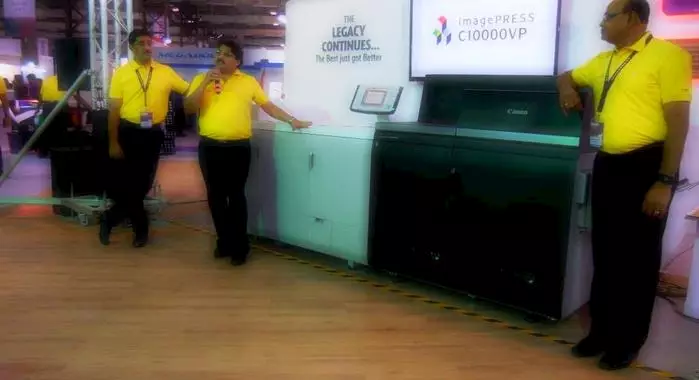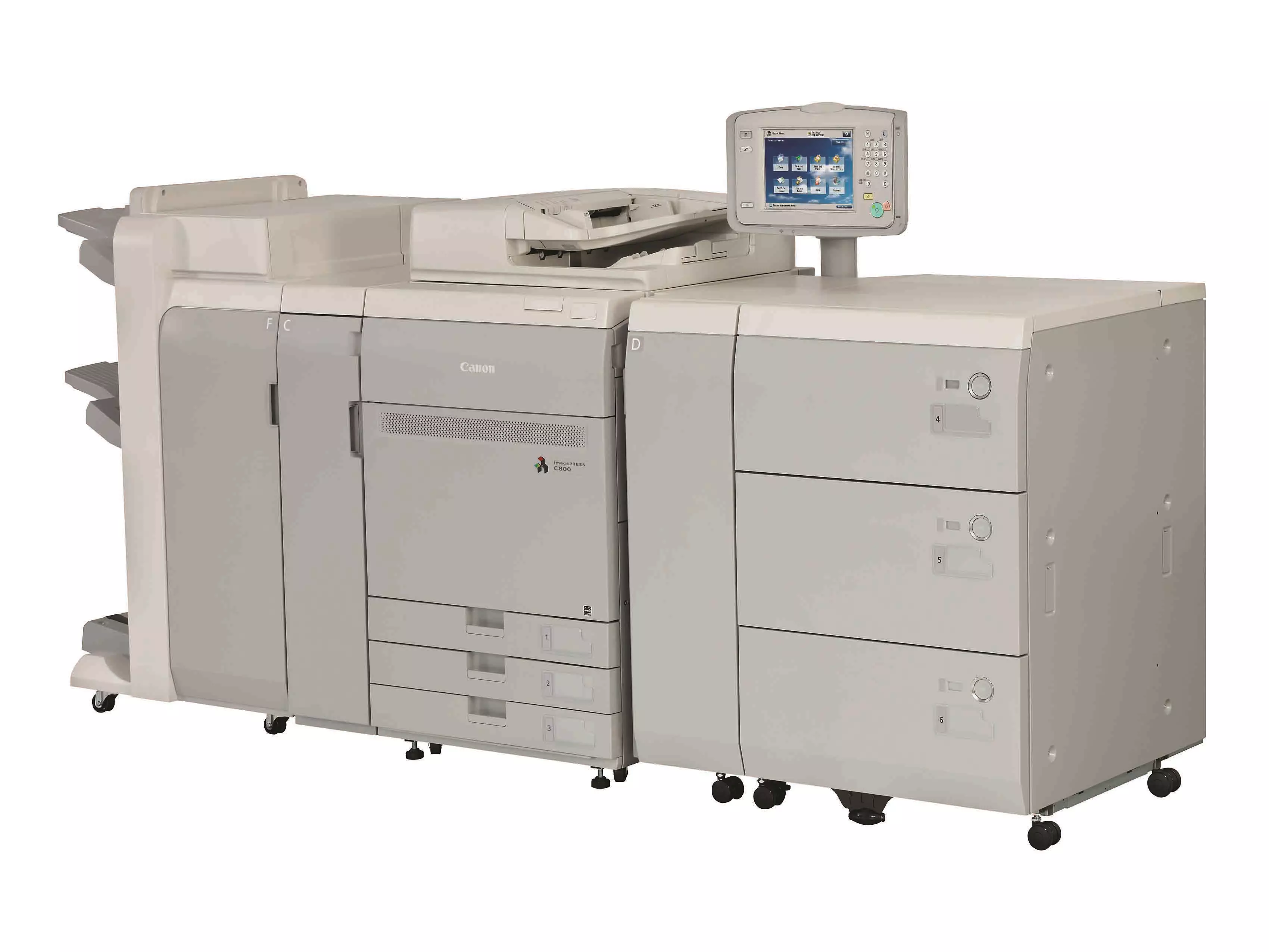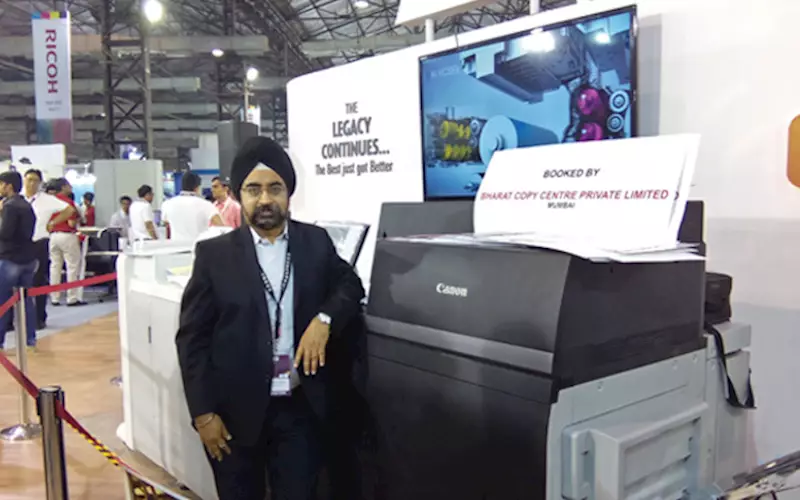“Inkjet is going to redefine digital print in India” - The Noel D'Cunha Sunday Column
16 Sep 2016 | By Noel D'Cunha
PrintWeek India (PWI): What was your favourite technology at Drupa 2016?
Gurjit Singh Dhingra (GSD): As a technology I was really impressed with the development in Inkjet technology. As compared to the Drupa in 2012, this year we saw lot many products take a quantum leap, that in a span of four years.
PWI: What was your favourite kit at Drupa 2016?
GSD: As far as my favourite kit goes there were two, and both from Canon. One is the futuristic, the Voyager, and the other is the ImagePress Color 10000VP, which has left a lasting impact, and I am not just stating this as a Canon professional.
PWI: Why the Voyager?
GSD: Voyager was one of the star attractions at Drupa, primarily because of its capability of delivering high print quality on various types of media, from the thin to the thick, from inkjet media to offset. Of course it is still a prototype, and we are soliciting inputs from our customers the world over to make this press a ‘revolutionary’ product once it is launched.
PWI: It’s a prototype new technology… a B2 sheetfed inkjet press that uses an offset transfer cylinder …
GSD: This product could bring unique proposition – that of offering one product for different applications, like photo, high-quality commercial printing and packaging simultaneously. Of course it needs a lot of volume to be fed. As for the adoption of such a machine in India – it’s a wait and watch for us.
PWI: Your ideal customer for the C10000VP?
GSD: A customer who is printing approx 50,000 A3+ prints monthly and wants to upgrade to a colour digital press that can open up new applications for his customers with the legendary reliability of Canon ImagePress backed by our direct service support, which has always been our unique proposition.

PWI: Viable for packaging?
GSD: Yes. We are also looking at exploring the packaging space plus tapping the offset printers who print short-runs on brochures and catalogues.
PWI: The future of ImagePress C8000VP in India?
GSD: We have not yet launched the ImagePress C8000VP in India as the market is moving to high-speed printing and 100ppm seems to be a sort of benchmark in minds of the print service providers.
PWI: Why no launch?
GSD: Hmm, your question has made us ponder, if we should launch the C8000 in India. However, to answer your question, the C8000 is designed for high-volume customers, whereas the C800 is meant for mid-end segment. The C8000VP delivers a consistent speed of 80ppm whereas in the C800 the speed decreases when thicker gsm media is used. And though in terms of print quality both are equally good, the C8000VP being a latest launch has better features to further enhance colour consistency and productivity.
PWI: ImagePress C8000VP vs ImagePress C800? Pros-cons?
GSD: To make it simple, let me put it this way… the machine price of ImagePress C8000 is significantly higher than the ImagePress C800 but the operating cost of C8000 is lower than that of C800. So the total cost of ownership depends on how the customer looks at the investment, and the number of years he would like to run the machine.

PWI: You enjoyed a stint at a top printing house in Faridabad. What did you master / learn?
GSD: Whatever I know of printing today, is courtesy that organisation – Thomson Press. I learned the basics of colour reproduction and printing. Being a part of pre-press operations at Thomson for more than a decade, I mastered colour management and was instrumental in implementing colour management, CTP and unified workflow solution across their production sites.
PWI: ISO 12647-7 tolerance? Good or over-rated?
GSD: It is of course good as it can really help you standardise your digital equipment, which in turn can help deliver consistent print qualities over a period of time. It can also help you leverage business opportunities wherein customers are looking at multi-locational printing across the world but wants similar standards of output.
PWI: As an offset man, are you happy with the offset vs inkjet debate?
GSD: It will be a little unfair comparison. Inkjet technology is evolving and fast, as was visible in the last two Drupa shows. However, as it is still in the evolving stage, there is a lot more work required to be done at every level including components like printheads, inks, paper handling, drying technology etc, to make the gamut even wider.
PWI: What about the gamuts and colour densities with the new Chromera inks on the ColorStream6000?
GSD: Yes, as a technology Inkjet has the capability to excel in colour gamut as displayed in our 12-colour inkjet large-format printers or the DreamLabo. But development in both ink and paper will have to be ongoing on high-speed ColorStream presses.
PWI: Which are the b-tier cities in India that will boom?
GSD: Cities in States like MP, Chhattisgarh, Telangana, and the Seven Sisters in East have the potential to grow big in terms of prints.
PWI: Canon’s USP for first time entrepreneurs?
GSD: Other than product features and product reliability, we pride ourselves in having standard service charges which is unique to this industry. Our biggest USP is our service quality and most of our customers come back to us again and again for orders based on this parameter alone.
PWI: India has 5,160 towns and four million in 627,000 villages. How can print serve such a vast geographic area?
GSD: Digital print looks to be the most appropriate solution, because the initial investment is low, it requires lesser space and there a certain level of ease of operation compared to the conventional offset printing.
PWI: What Canon equipment can you run?
GSD: Since, I come from a technical background, pre-press to be specific, operating a digital press is not a challenge for me. I have operated most of the latest Canon digital presses and large-format printers.
PWI: What’s been Canon’s proudest achievement in the past few years in India?
GSD: Without doubt, it has to be customer loyalty. Our biggest strength in past years has been our customers, who have always trusted our products and services, and have regularly returned to repeat their orders.
PWI: What will a good year look like when the books are closed for the Drupa financial year?
GSD: We are expecting to grow by 15% over the last year’s numbers.
PWI: Where do you see Canon’s business in five years’ time?
GSD: Apart from the traditional imaging and printing business, Canon as an organisation is diversifying in different segments like surveillance cameras and software, medical imaging etc. Canon has made some major acquisitions worldwide in these verticals.
PWI: And in India?
GSD: In India, we are highly optimistic about Canon’s phenomenal growth by leveraging these opportunities in coming years.
PWI: Toner v/s inkjet? Your money is on ...
GSD: From a future perspective, I would bet on inkjet, because the way it is evolving, it is going to redefine the boundaries of digital printing.
PWI: What does the Oce-Canon partnership mean to you?
GSD: It means a lot to us. It has put us at a different level in terms of product offerings, domain knowledge and support mechanism. With the two giants coming together, we have a product offering for almost all professional printing segments, be it commercial printing, transactional printing, book printing, wide-format inkjet or technical document for various needs.
PWI: Digital print is going through an evolution in India. When will we breach the ten billion impression mark?
GSD: It will completely depend on the adoption of continuous-feed inkjet technology in India. The faster we do, the earlier we will reach the mark.
PWI: One thing you could change within our business, what would that be?
GSD: Hmm… the downward spiral of the digitally printed document in India.
PWI: One print application you love?
GSD: It will be unfair to comment on the applications produced across India by various printers, who do a marvellous job.
PWI: Surely, you can do better …
GSD: If I had to pick from one of Canon’s internal publication, it would easily have to be the Holi direct mailer we did for our end-customers.
PWI: After reading this interview if someone wants to meet you, how can they do so? Where are you based?
GSD: In Gurgaon, which is Canon India’s head office.











 See All
See All